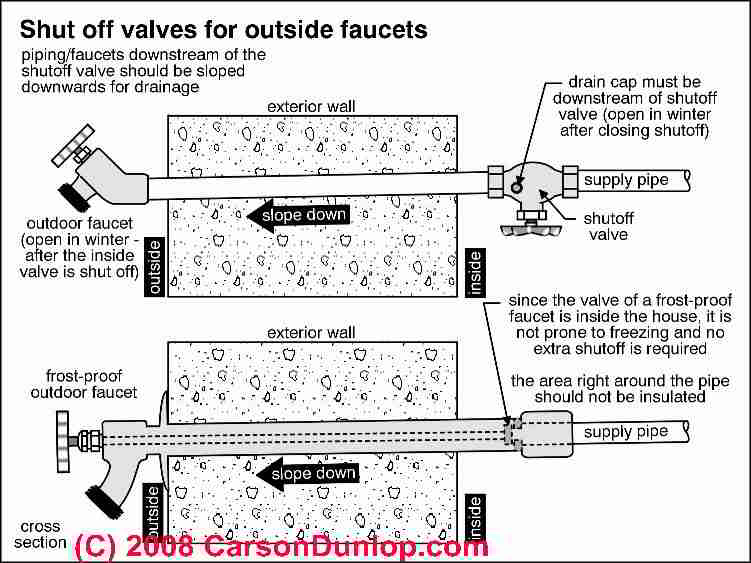The other day I found frost proof hose bibs with no shut off valves in the crawlspace. I had never seen it before but it seemed like that might be ok since they are frost proof bibs. When I looked it up, it says that the shut off valves are not required on frost proof bibs if the hose bib stems go through insulation. So if they go through a concrete wall they still need the shut off valve right?
Is the crawlspace conditioned? The idea is to keep the water pipe from freezing. A shut off won’t do much good if someone insulated the home floor (ceiling of the crawl) and left the crawl vents open.
Personally, in our location, I like to insulate the perimeter crawlspace walls, barrier the ground, seal off the vents and condition the crawlspace. Then pipes and such are protected.
They would not need a shut off valve. The portion of the bib that is going through the wall does not have water in it when shut off. Any portion of the water pipe within an unconditioned crawl space should either be within the subfloor insulation or have the pipe wrap installed.
A good majority of new construction up here has the hose bib supply line within the exterior garage wall which is not insulated and the bib at the front. In that case they install a shut off valve prior to entering the wall, usually near the water heater.
· **For The Record: **The hose bib (exterior faucet) is the long-stem “frost-free” type. These faucets are designed not to retain water in them after they are shut off, so they are less prone to freezing in wintertime. However, our experience is that these faucets are not always reliable. We have come across a few instances where the “frost-free” hose bib has frozen up during severely cold weather conditions. In most cases, this is due to improper installation. Frozen pipes can split, risking a flood in the basement and considerable water damage. For added protection, we recommend a second shut-off valve on the water supply to the hose bib be installed inside the house so you won’t have to rely on the frost-free hose bib alone. If the frost-free hose bib has survived a few or more winters, however, one could argue that at this point the risk of a failure is minimal.
Hope this helps,
